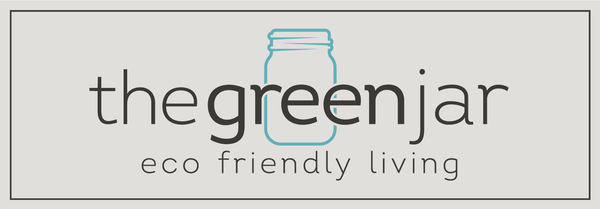
Harnessing the Power of Cleaning Vinegar for a Healthier Living Space
If you're looking for a safer, more effective way to tackle everyday messes, cleaning vinegar is a smart, science-backed alternative to harsh chemical cleaners. Whether you're managing a household or a business, this natural solution offers impressive cleaning power with minimal environmental impact.
What Is Cleaning Vinegar?
Cleaning vinegar is a stronger, more concentrated form of white vinegar, typically around 12%-20% acidity (compared to 5% in food-grade vinegar). This increase in acidity makes it significantly more effective at breaking down grime, grease, and mineral deposits—without the need for synthetic chemicals.
Why It Works
The acetic acid in cleaning vinegar acts as a natural solvent, dissolving dirt, soap scum, and hard water stains. It also has mild antibacterial properties, making it a great choice for everyday surface cleaning. Unlike many commercial cleaners, it leaves no toxic residue behind.
Benefits of Using Cleaning Vinegar
✅ Eco-friendly: Biodegradable and non-toxic
✅ Cost-effective: A little goes a long way
✅ Multi-purpose: Suitable for kitchens, bathrooms, windows, and even laundry
✅ Safe for most surfaces: When diluted properly, it’s gentle yet effective
Common Uses
Cleaning vinegar is incredibly versatile. You can use it to:
- Clean countertops, sinks, and stovetops
- Remove soap scum from showers and tubs
- Deodorize garbage bins and drains
- Brighten windows and mirrors
- Freshen up laundry and remove odors
Expert Tips for Best Results
- Dilute before use: Mix with water (see chart) for general surface cleaning.
- Add essential oils: A few drops of lemon, lavender, or tea tree oil can enhance the scent and cleaning power.
- Test first: Always spot-test on delicate surfaces like natural stone or hardwood.
🧪 Vinegar Dilution Guide:
| Starting Vinegar Strength | Target Strength | Vinegar (Parts) | Water (Parts) | Example (1 Cup Vinegar) |
|---|---|---|---|---|
| 12% | 5% | 5 | 7 | 1 cup vinegar + 1.4 cups water |
| 20% | 5% | 1 | 3 | 1 cup vinegar + 3 cups water |
📌 How to Use Cleaning Vinegar at Home
1. Disinfect High-Touch Surfaces Naturally
Maintaining a clean and healthy home starts with your most-used surfaces. Cleaning vinegar’s high acidity helps eliminate bacteria and grime on:
- Kitchen counters and cutting boards * Avoid porous, stone countertops.
- Bathroom sinks and faucets
- Doorknobs, light switches, and remote controls
How to use: Mix equal parts vinegar and water in a spray bottle. Spray and wipe with a clean cloth.
2. Neutralize Odors Without Artificial Fragrances
Vinegar neutralizes odors at the source—no synthetic fragrances needed. Use it to freshen:
- Trash bins and diaper pails
- Pet areas and litter boxes
- Musty closets or laundry rooms
Tip: Add a few drops of essential oil (like lemon or lavender) to your vinegar solution for a pleasant scent.
Bonus: To deodorize reusable containers, fill with diluted vinegar, let sit for 10 minutes, then rinse and reuse.
3. Tackle Stains on Upholstery and Laundry
Cleaning vinegar is a gentle yet effective stain remover for:
- Couch cushions and fabric chairs
- Clothing, towels, and linens
- Rugs and pet bedding
How to use: Mix vinegar with water, dab onto the stain, let sit for a few minutes, then blot or rinse.
4. Unclog Drains Without Harsh Chemicals
Skip the store-bought drain cleaners. For a natural solution:
- Pour ½ cup baking soda down the drain
- Follow with ½ cup vinegar
- Let fizz for 15–30 minutes, then flush with hot water
This method is safe for kitchen and bathroom sinks.
5. Remove Soap Scum and Mineral Buildup
Hard water can leave behind cloudy residue on:
- Shower doors and tiles
- Bathroom fixtures
- Kitchen faucets
Pro tip: Spray undiluted vinegar on affected areas, let sit for 5–10 minutes, then scrub and rinse clean.
🚫 What Not to Mix with Vinegar:
Mixing vinegar with the wrong substances can be ineffective—or even dangerous.
Here are a few combinations to avoid:
1. Vinegar + Baking Soda (for storage)
While this combo is great for unclogging drains, don’t mix and store them together. They neutralize each other, canceling out their cleaning power. Plus, the reaction creates carbon dioxide gas, which can build pressure in sealed containers.
2. Vinegar + Hydrogen Peroxide
Used separately, both are effective disinfectants. But mixing them creates peracetic acid, which can irritate skin, eyes, and lungs. Use one after the other—never together in the same bottle.
3. Vinegar + Castile Soap
This natural soap curdles when mixed with vinegar, creating a slimy mess that’s hard to clean and not effective. Use vinegar for rinsing, not with soap.
4. Vinegar + Bleach
Never mix vinegar with bleach. This creates toxic chlorine gas, which can cause serious respiratory issues and even be fatal in high concentrations.
5. Vinegar + Hypochlorous acid
When the pH drops too low, hypochlorous acid can convert into chlorine gas (Cl₂)—a toxic and potentially dangerous substance, especially in enclosed spaces.
Final Thoughts
Cleaning vinegar is more than a trend—it's a proven, practical solution for those who value both performance and sustainability. Whether you're a homeowner or a business committed to eco-conscious practices, incorporating cleaning vinegar into your routine is a simple step with powerful results.
